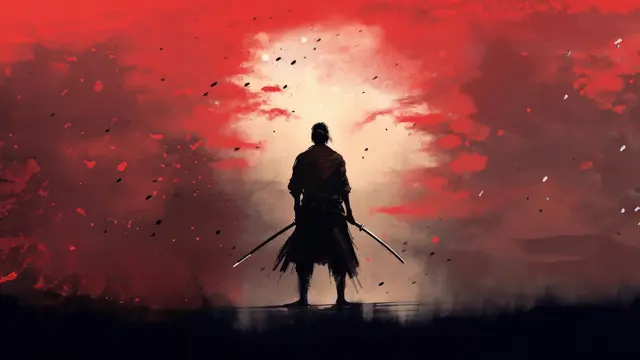What about Harmattan
HARMATTAN ONSET:
The Harmattan season typically begins in West Africa during the late months of the year, most notably from November to February. Its onset is marked by the gradual movement of dry, dusty winds from the northeast. These winds originate from the Sahara Desert and Sahel region, carrying fine particles of dust and lowering humidity levels.
CHARACTERISTICS DURING ONSET:
1. Dust-Laden Winds:
- The winds bring with them a noticeable haze, reducing visibility as the atmosphere becomes laden with fine particles of dust.
2. Temperature Drop:
- There's a decrease in temperatures as the dry harmattan winds replace the moist maritime air, leading to cooler conditions.
3. Low Humidity:
- The arrival of Harmattan is accompanied by a significant drop in humidity levels, contributing to the dry and arid atmosphere.
Harmattan Peak:
The peak of the Harmattan season typically occurs between December and January. During this period, the dry and dusty conditions intensify, affecting various aspects of daily life.
EFFECTS DURING PEAK:
1. Dry Skin and Lips:
- The low humidity levels can lead to dry skin and chapped lips, requiring increased moisturization.
2. Dusty Atmosphere:
- The atmosphere remains hazy, with visibility further reduced due to the concentration of dust particles.
3. Impact on Agriculture:
- Harmattan can have both positive and negative effects on agriculture. While it can contribute to pest reduction, the dry conditions may adversely affect crops.
HARMATTAN CONCLUSION:
The Harmattan season gradually subsides from February onwards, marking the end of its influence. The winds shift, and the atmospheric conditions begin to transition back to a more humid and less dusty state.
Characteristics During Conclusion:
1. Waning Dust Concentration:
- The concentration of dust in the atmosphere gradually diminishes as the Harmattan winds weaken.
2. Return of Moisture:
- Humidity levels begin to rise as the influence of the dry Harmattan winds diminishes, leading to a return of more humid conditions.
3. Temperature Gradually Rises:
- With the waning of Harmattan, there is a gradual increase in temperatures as the region transitions to a more typical climate.
In summary, the Harmattan season starts with the arrival of dry, dusty winds from the Sahara, peaks in December and January, and concludes as the winds weaken, humidity rises, and temperatures gradually increase from February onwards.
#learnwithcoral
The Harmattan season typically begins in West Africa during the late months of the year, most notably from November to February. Its onset is marked by the gradual movement of dry, dusty winds from the northeast. These winds originate from the Sahara Desert and Sahel region, carrying fine particles of dust and lowering humidity levels.
CHARACTERISTICS DURING ONSET:
1. Dust-Laden Winds:
- The winds bring with them a noticeable haze, reducing visibility as the atmosphere becomes laden with fine particles of dust.
2. Temperature Drop:
- There's a decrease in temperatures as the dry harmattan winds replace the moist maritime air, leading to cooler conditions.
3. Low Humidity:
- The arrival of Harmattan is accompanied by a significant drop in humidity levels, contributing to the dry and arid atmosphere.
Harmattan Peak:
The peak of the Harmattan season typically occurs between December and January. During this period, the dry and dusty conditions intensify, affecting various aspects of daily life.
EFFECTS DURING PEAK:
1. Dry Skin and Lips:
- The low humidity levels can lead to dry skin and chapped lips, requiring increased moisturization.
2. Dusty Atmosphere:
- The atmosphere remains hazy, with visibility further reduced due to the concentration of dust particles.
3. Impact on Agriculture:
- Harmattan can have both positive and negative effects on agriculture. While it can contribute to pest reduction, the dry conditions may adversely affect crops.
HARMATTAN CONCLUSION:
The Harmattan season gradually subsides from February onwards, marking the end of its influence. The winds shift, and the atmospheric conditions begin to transition back to a more humid and less dusty state.
Characteristics During Conclusion:
1. Waning Dust Concentration:
- The concentration of dust in the atmosphere gradually diminishes as the Harmattan winds weaken.
2. Return of Moisture:
- Humidity levels begin to rise as the influence of the dry Harmattan winds diminishes, leading to a return of more humid conditions.
3. Temperature Gradually Rises:
- With the waning of Harmattan, there is a gradual increase in temperatures as the region transitions to a more typical climate.
In summary, the Harmattan season starts with the arrival of dry, dusty winds from the Sahara, peaks in December and January, and concludes as the winds weaken, humidity rises, and temperatures gradually increase from February onwards.
#learnwithcoral






